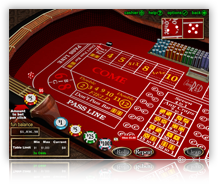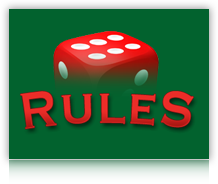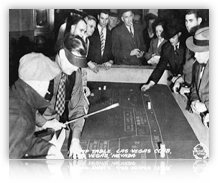One of the most important things you can learn when it comes to playing craps is the probability of any number rolling. For this you must consider how many variations of each possible number can be rolled.
Understanding Probabilities
Each die has six sides numbered 1 through 6. With two dice in play there are eleven possible numbers (2 through 12) which can be rolled in a total of 36 possible combinations. However, there are only so many ways to roll each number, and some numbers have more possible combinations than others do.
For example, a 12 can only be rolled one way, 6 – 6, but a 7 can be rolled six ways, 1 – 6, 2 – 5, 3 – 4, 4 – 3, 5 – 2, and 6 – 1. Therefore, a 12 can be rolled with 1 out of 36 possible combinations, so it has a probability of 35 to 1 (35:1), whereas a seven can be rolled in any one of 6 out of 36 combinations, or when mathematically simplified – 1 in 6 ( 36 / 6 = 6 ). Therefore, the probability that a 7 will be rolled is 5:1. This is the defining element of probability in craps.
| Number | Number of Ways to Roll | Odds |
|---|---|---|
| 2 | 1 | 35:1 |
| 3 | 2 | 17:1 |
| 4 | 3 | 11:1 |
| 5 | 4 | 8:1 |
| 6 | 5 | 6.2:1 |
| 7 | 6 | 5:1 |
| 8 | 5 | 6.2:1 |
| 9 | 4 | 8:1 |
| 10 | 3 | 11:1 |
| 11 | 2 | 17:1 |
| 12 | 1 | 35:1 |
Once you understand the basics of probabilities, you can begin to make informed bets on the craps tables. Of course there are no guarantees that a 7 will roll once for every six times the dice is rolled. That is why they call it gambling, but the idea of probabilities is sound. There is no set number of rolls I can give you that will be a definite guarantee.
The laws of craps probability simply state the mathematical odds of something happening, but don’t expect that just because it is probable that a 12 or a 2 will roll once for every 36 rolls of the dice that it will actually happen. You could see a 12 roll 3 times in a row, or go 100 rolls without ever seeing it happen. However, knowing the odds of any number rolling is the first step towards being successful on the craps tables.



